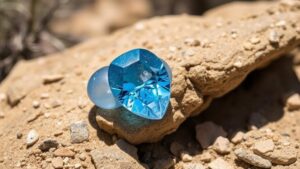Ancient Ocean Floors: Hunting for Ammonites and Other Fossilized Shells
Ancient Ocean Floors: Hunting for Ammonites and Other Fossilized Shells
Exploring ancient ocean floors is an exhilarating and enriching experience for rockhounds and mineral collectors. Ammonites and other fossilized shells provide a glimpse into our planet’s distant past, revealing a world teeming with life millions of years ago. This article will delve into the scientific significance of these fossils, the best locations for fossil hunting, and practical tips for collectors.
The Science of Fossils
Fossils are the preserved remains or traces of animals and plants from the geological past. Ammonites, a class of cephalopods related to modern squids and octopuses, thrived from the Devonian to the Cretaceous period, approximately 400 to 66 million years ago. Their spiral shells, often adorned with intricate patterns, make them particularly sought after by collectors. Fossils like ammonites not only allow paleontologists to reconstruct ancient environments but also assist in dating rock layers through biostratigraphy.
For example, the size of ammonite shells can vary significantly; while some were just a few centimeters across, others reached diameters of over 2 meters (6.5 feet). This variation can help indicate environmental conditions during their lifecycle and assist in understanding evolutionary changes.
Best Locations for Collecting Fossils
There are several renowned locations around the world where enthusiasts can hunt for ammonites and other fossilized shells. Here are a few notable sites:
- Charles City, Iowa, USA: Known for its rich deposits of Devonian-aged fossils, particularly ammonites and brachiopods.
- The Jurassic Coast, England: A UNESCO World Heritage Site, this 95-mile stretch along the southern coast is known for its well-preserved Jurassic fossils.
- Mossy Point, Australia: Collectors can find a variety of fossilized shells along its exposed rocks, dating back to before dinosaurs roamed the earth.
- The Pierre Shale, South Dakota, USA: This area contains valuable Cretaceous fossils, including ammonites and marine reptiles.
Techniques for Collecting Fossils
When heading out on a fossil-hunting expedition, utilizing proper techniques can enhance your success and preserve these delicate treasures. Here are some effective strategies to consider:
- Research Locations: Before visiting a site, research its geological history and what fossils have been found there in the past.
- Use the Right Tools: Equip yourself with a rock hammer, chisel, brushes, and a sturdy backpack. Wearing gloves can protect your hands from sharp edges.
- Observe Natural Erosion: Look for areas where soil and rock have eroded; these locations often reveal buried fossils.
Preserving Your Finds
After a successful day of fossil hunting, care must be taken to preserve your finds for future display or study. Here are some key preservation tips:
- Cleaning: Use a soft brush and water to remove dirt and debris. Avoid harsh chemicals as they may damage the fossil.
- Drying: Allow fossils to air dry completely to prevent mold or deterioration.
- Storage: Store fossils in a controlled environment, using glass cases or acid-free boxes to minimize exposure to air and moisture.
Conclusion: The Joy of Collecting
Hunting for ammonites and other fossilized shells provides an opportunity to connect with Earths history while indulging in a rewarding hobby. With a better understanding of the science behind fossils, optimal collection strategies, and preservation techniques, collectors can enjoy this fascinating pursuit for years to come.
For budding rockhounds, consider joining local fossil clubs or online communities to share findings, resources, and experiences. Remember, each fossil is not just a piece of rock but a fragment of an ancient story, waiting to be told.



